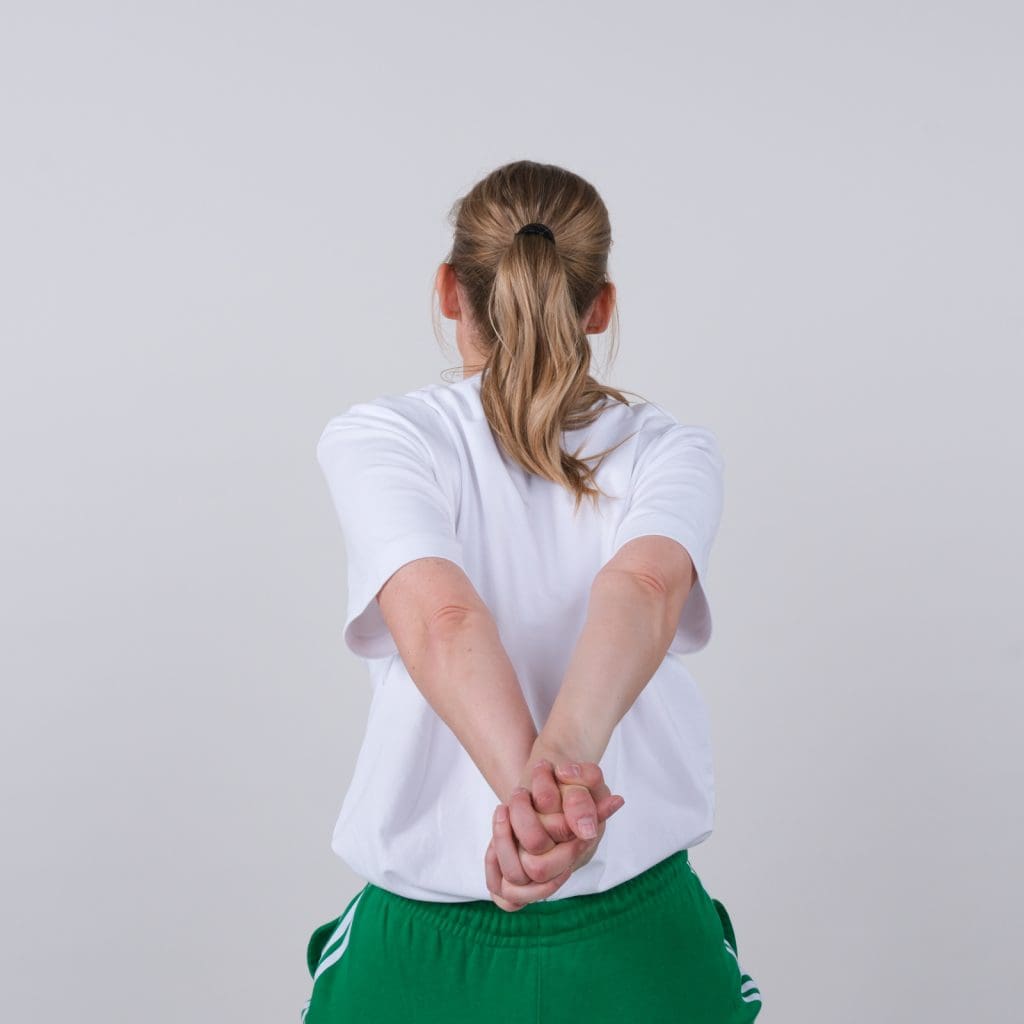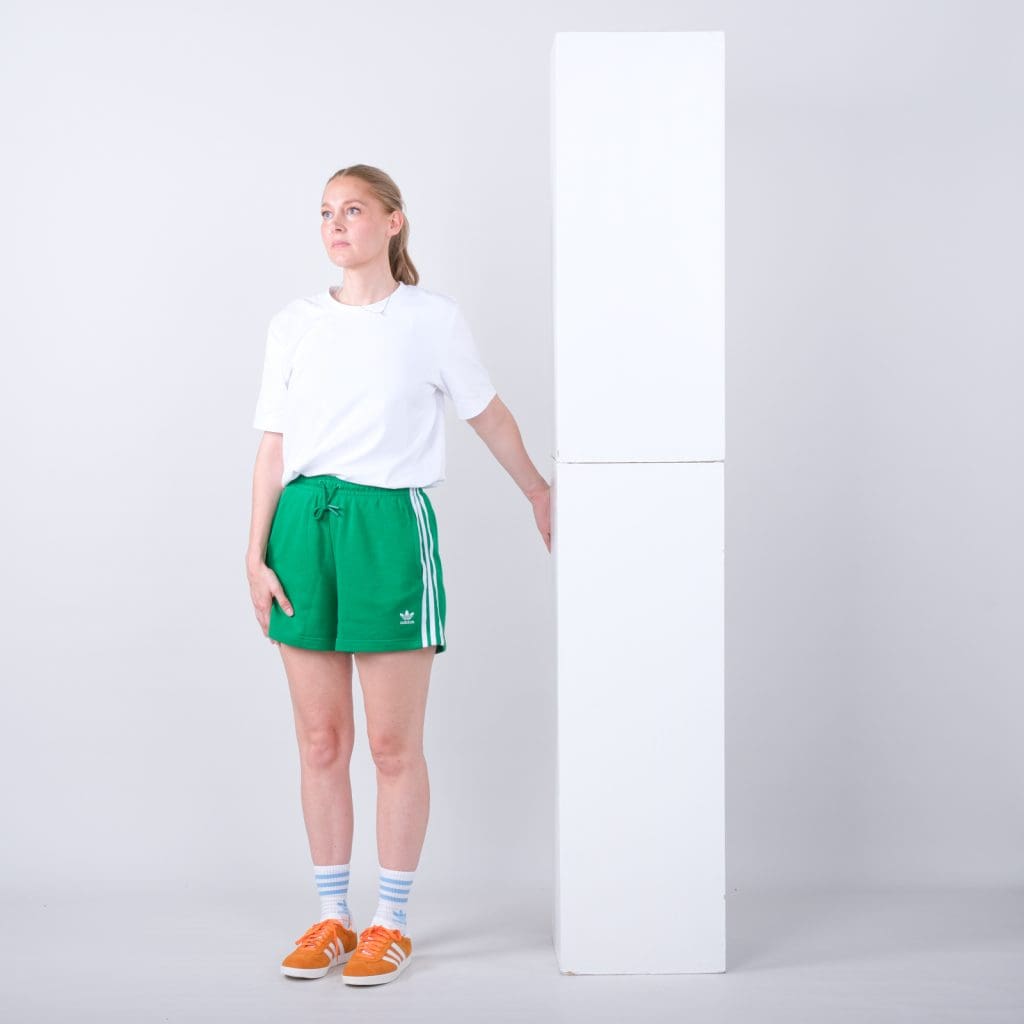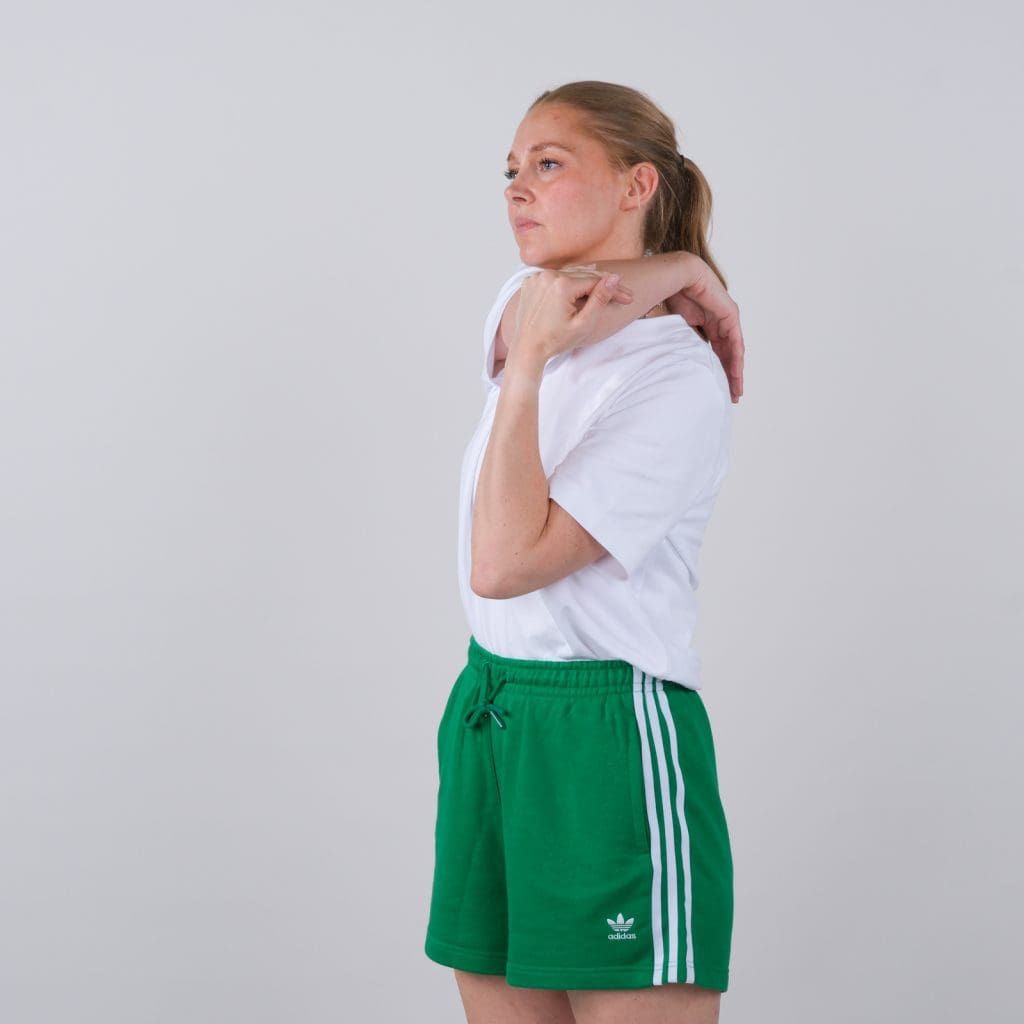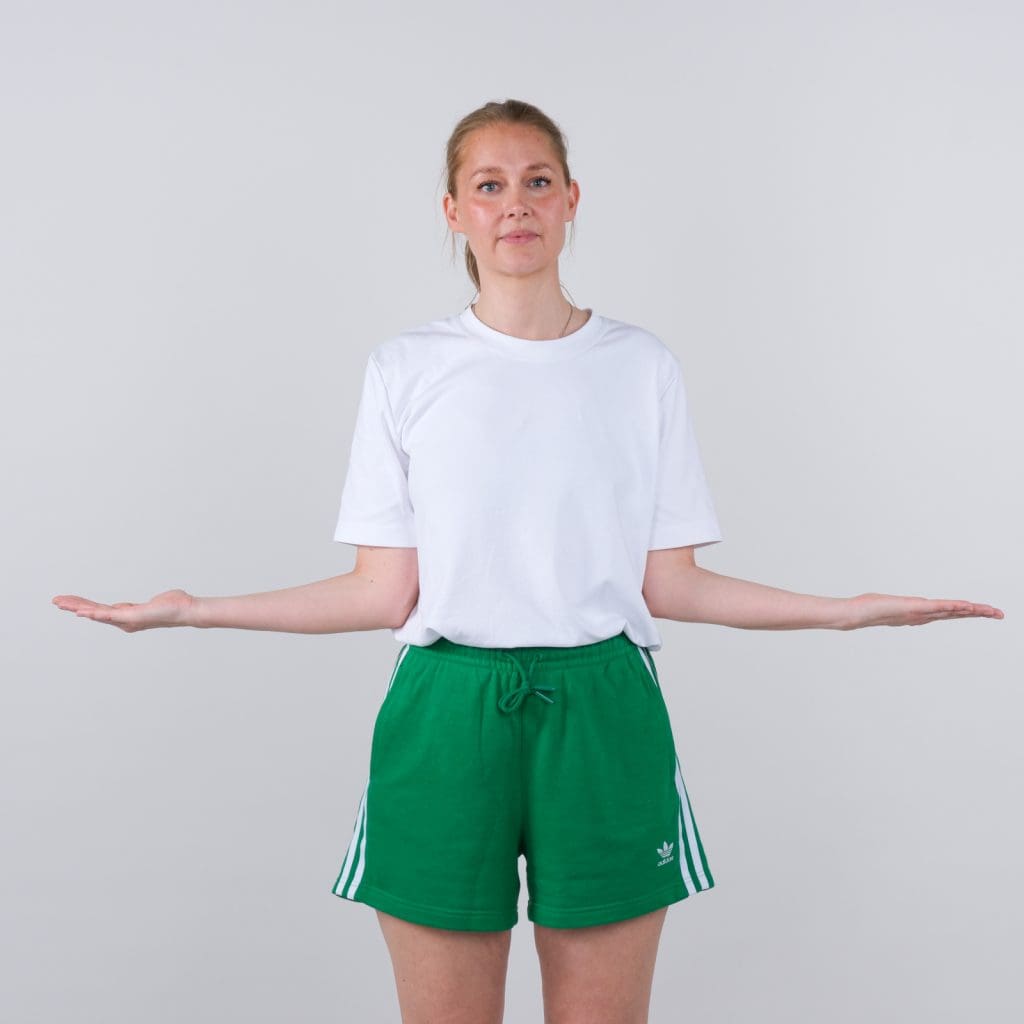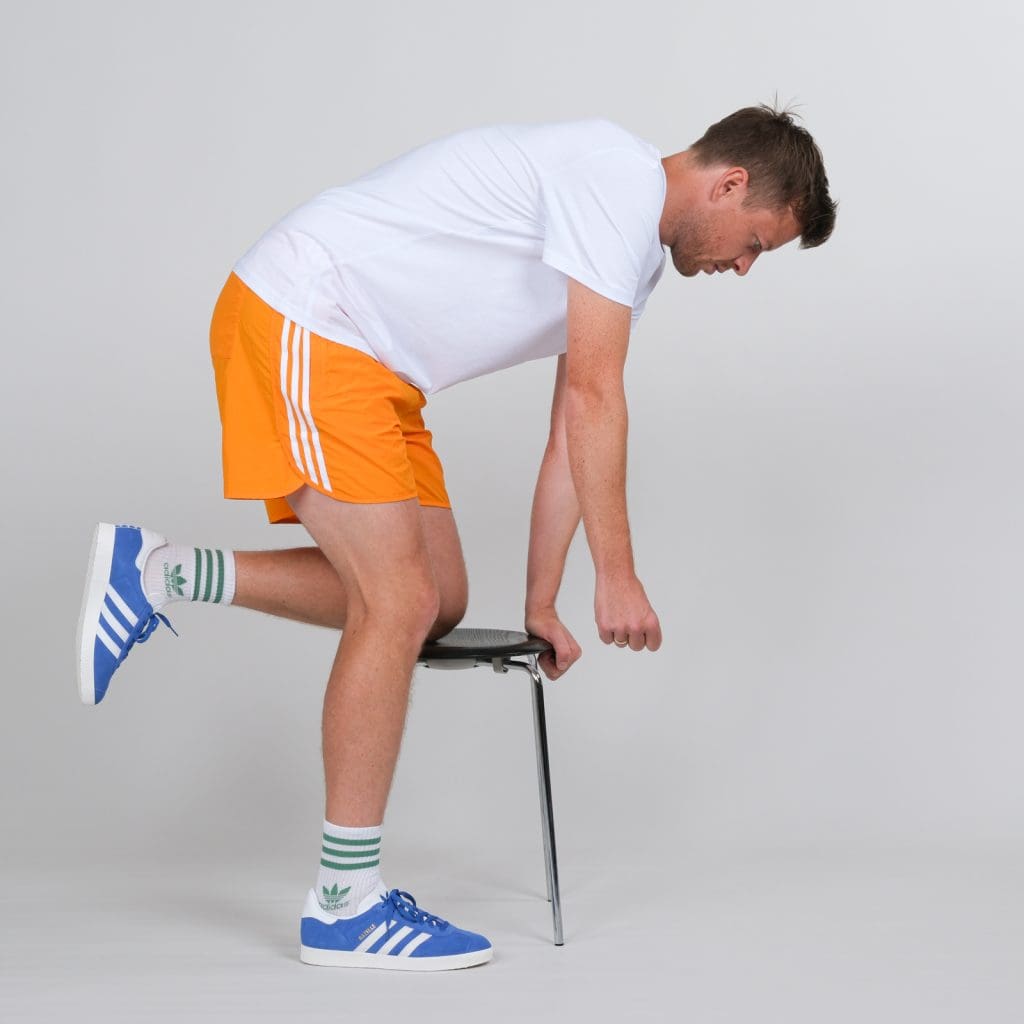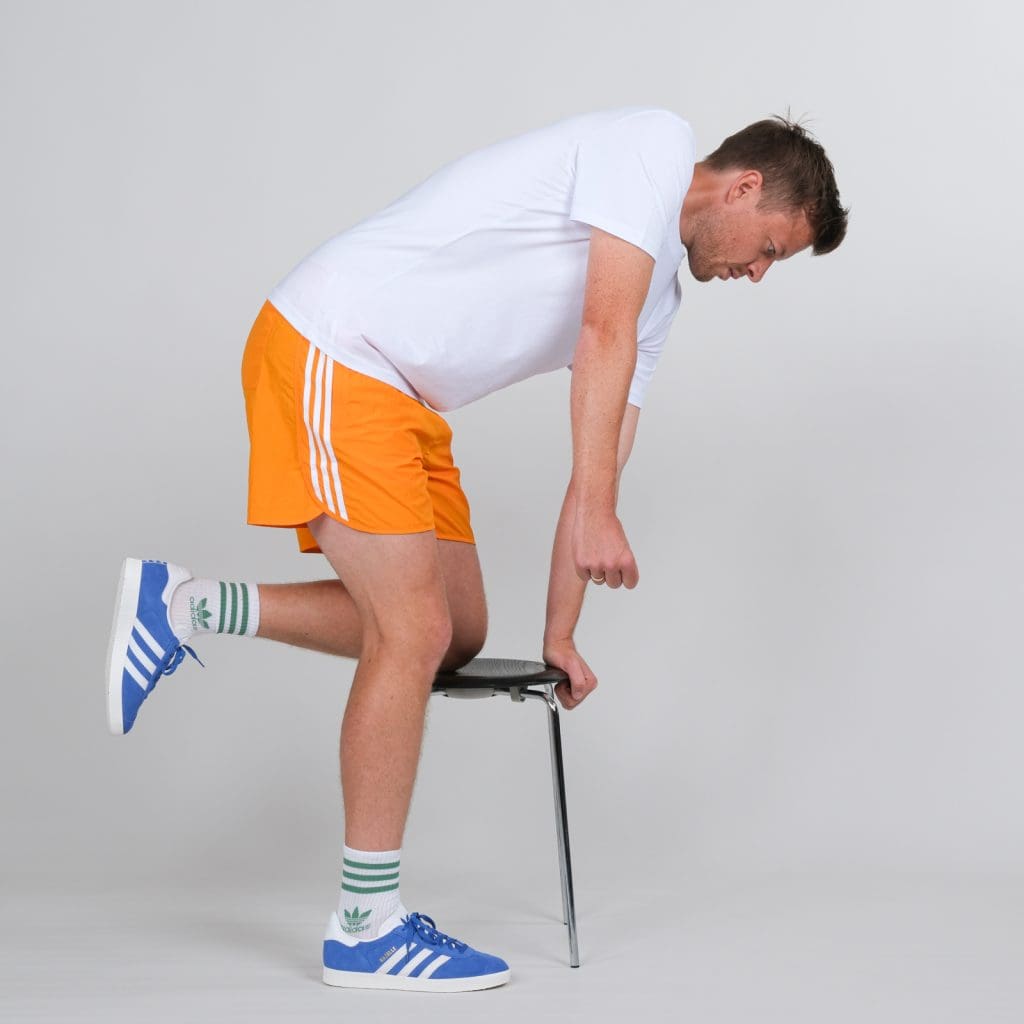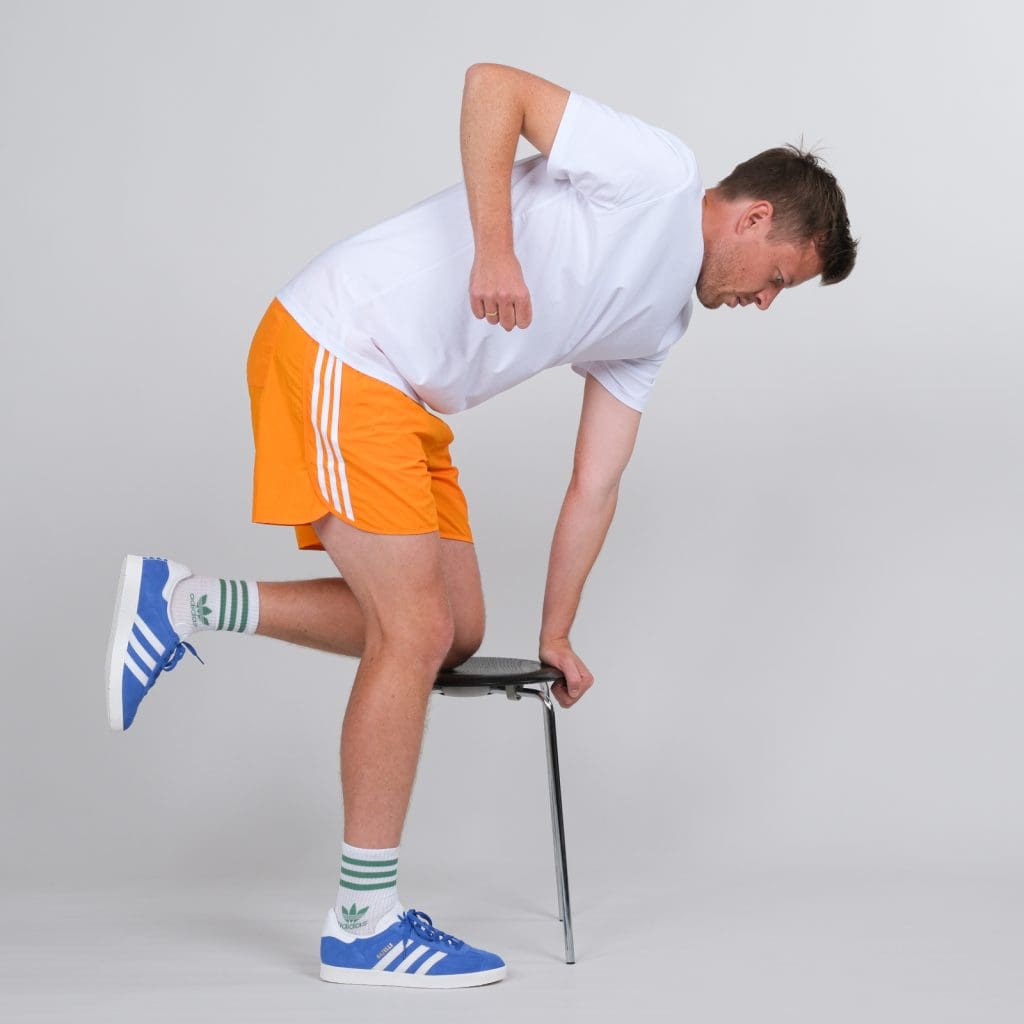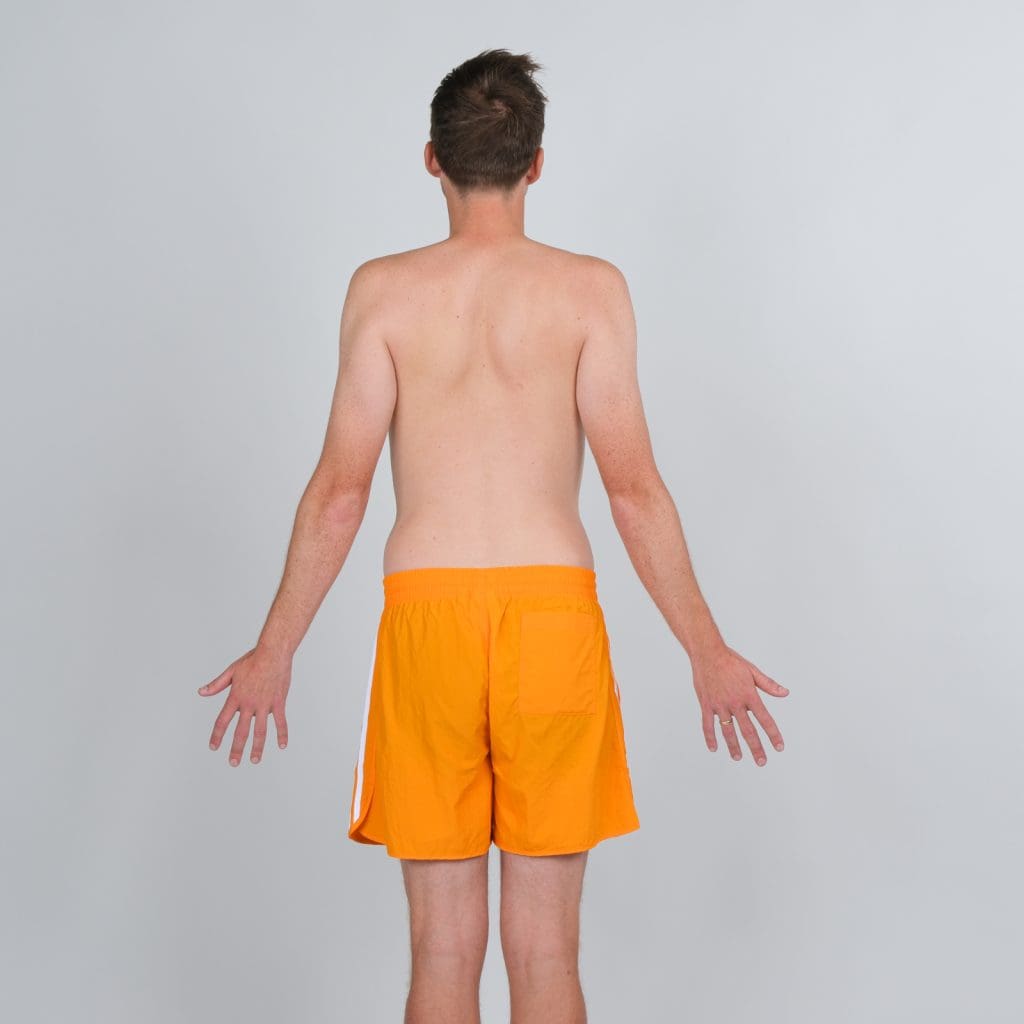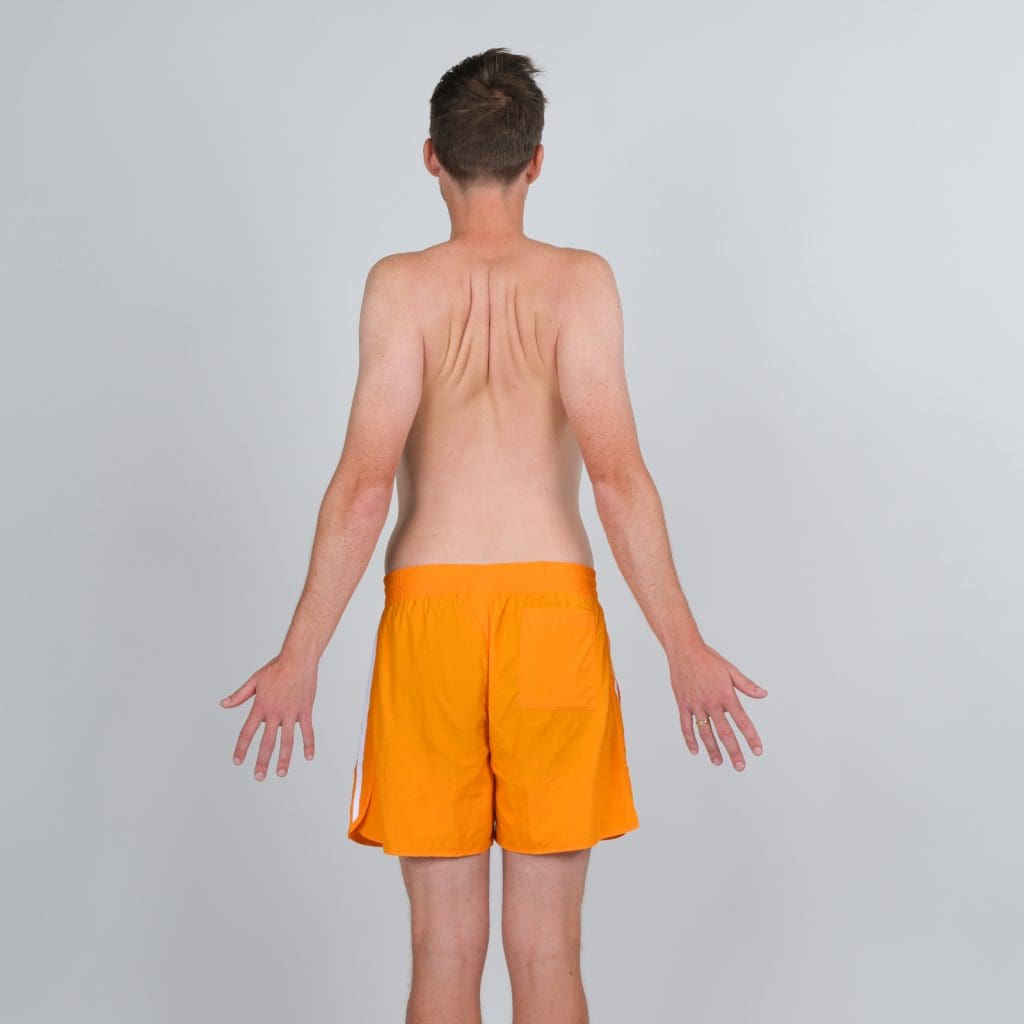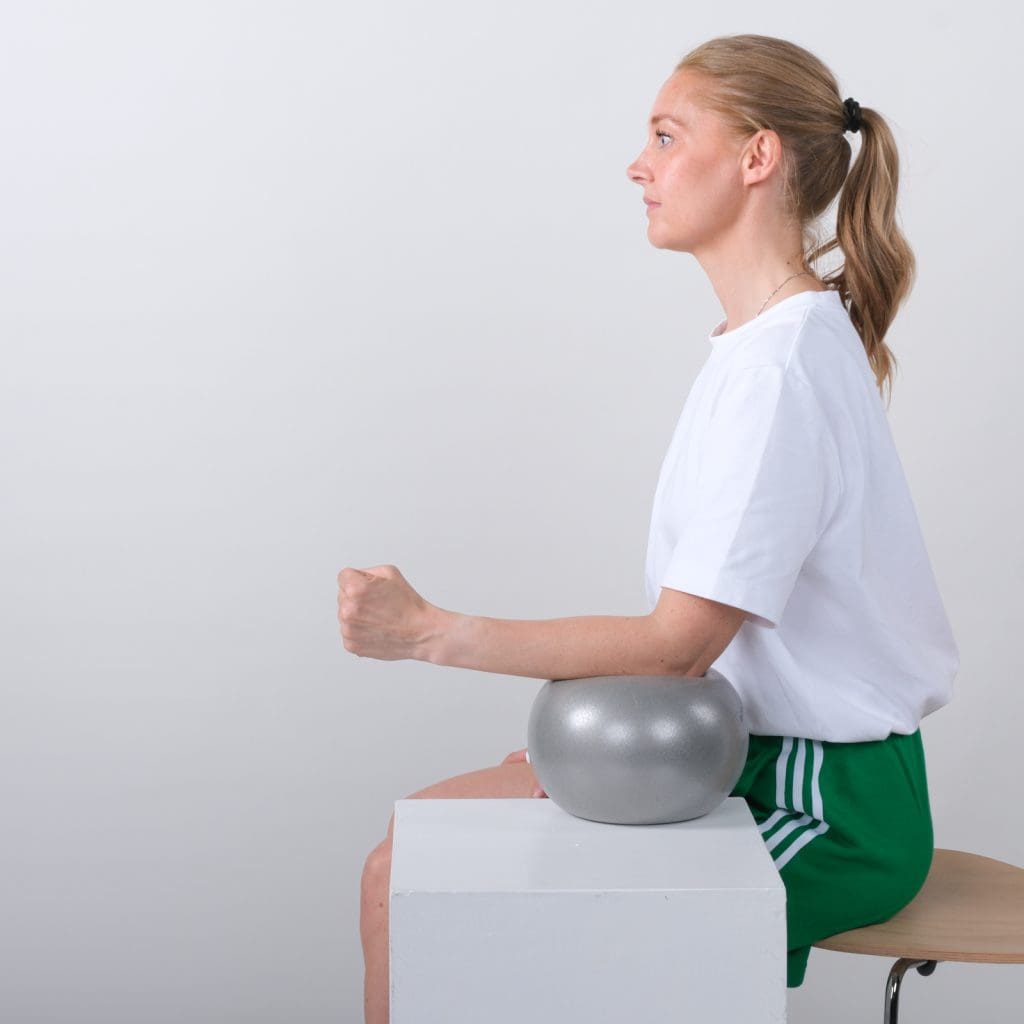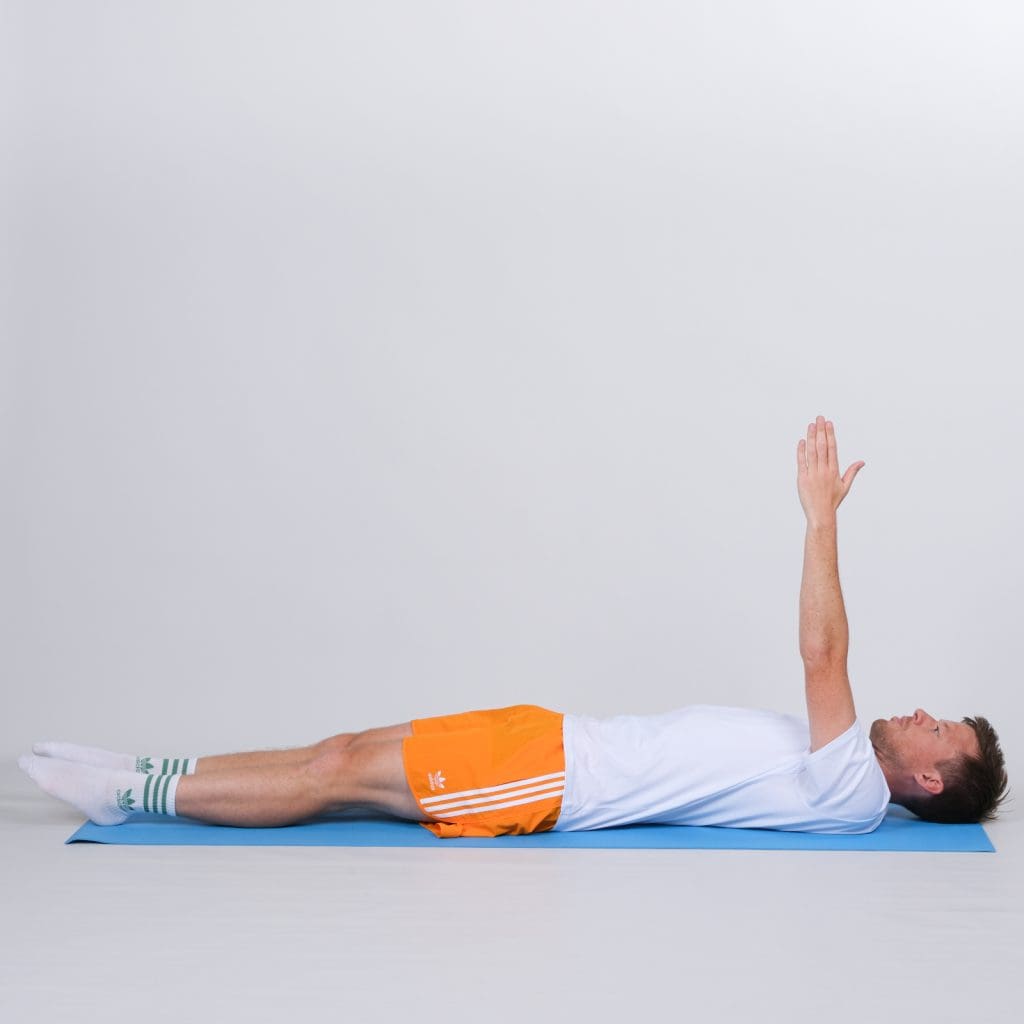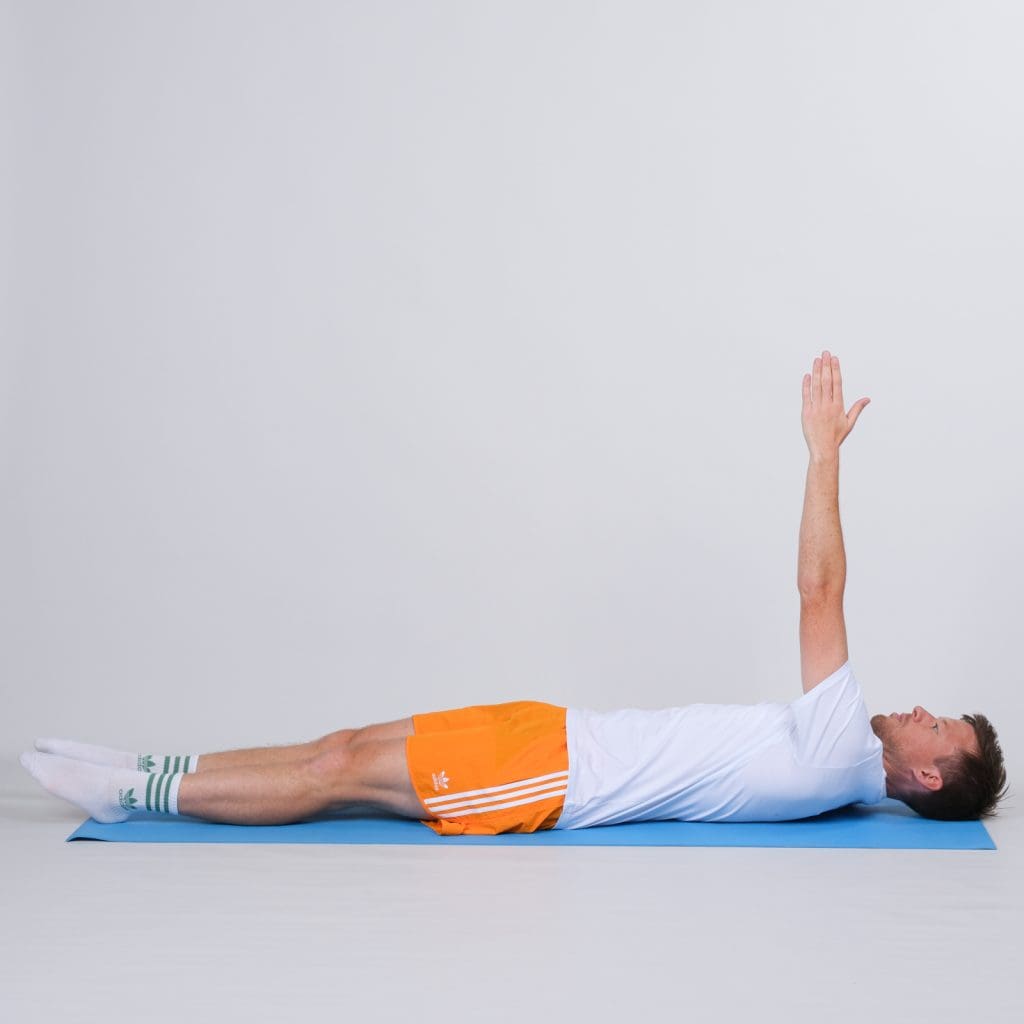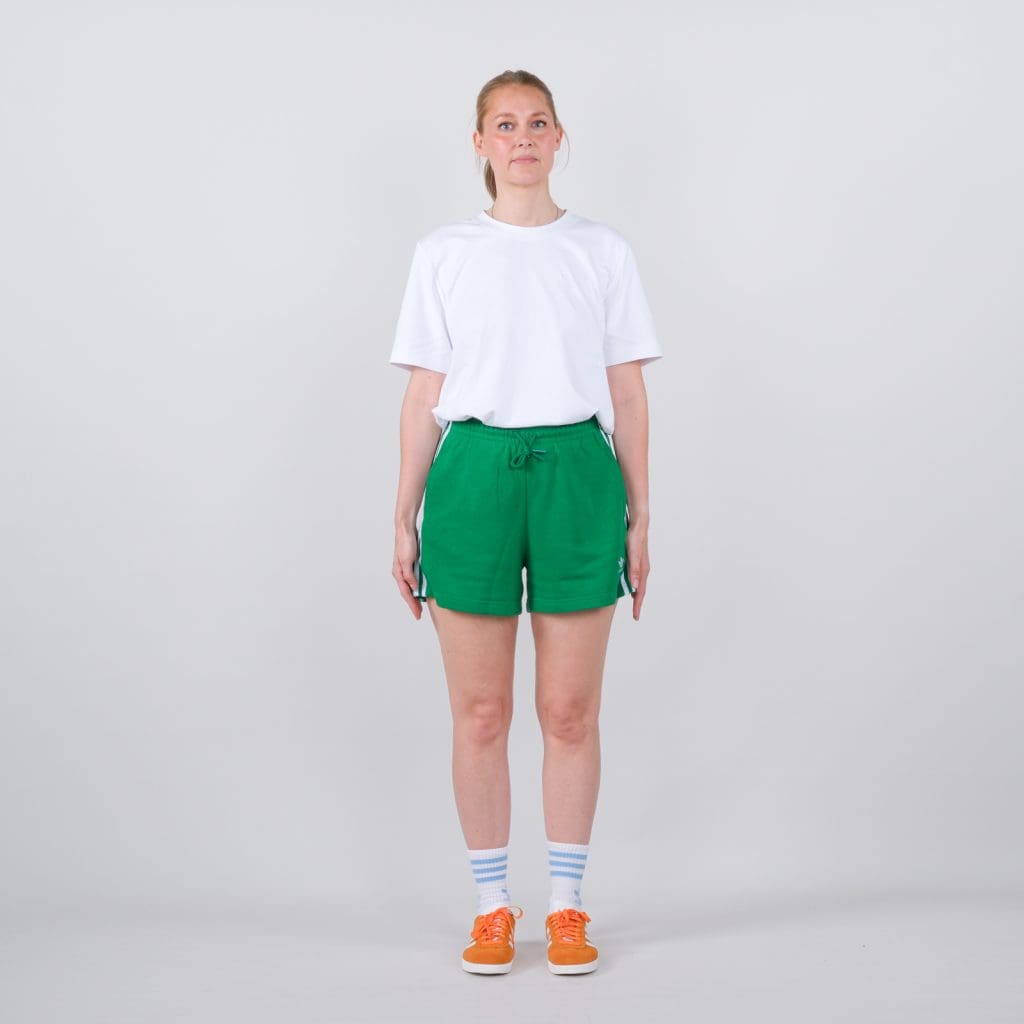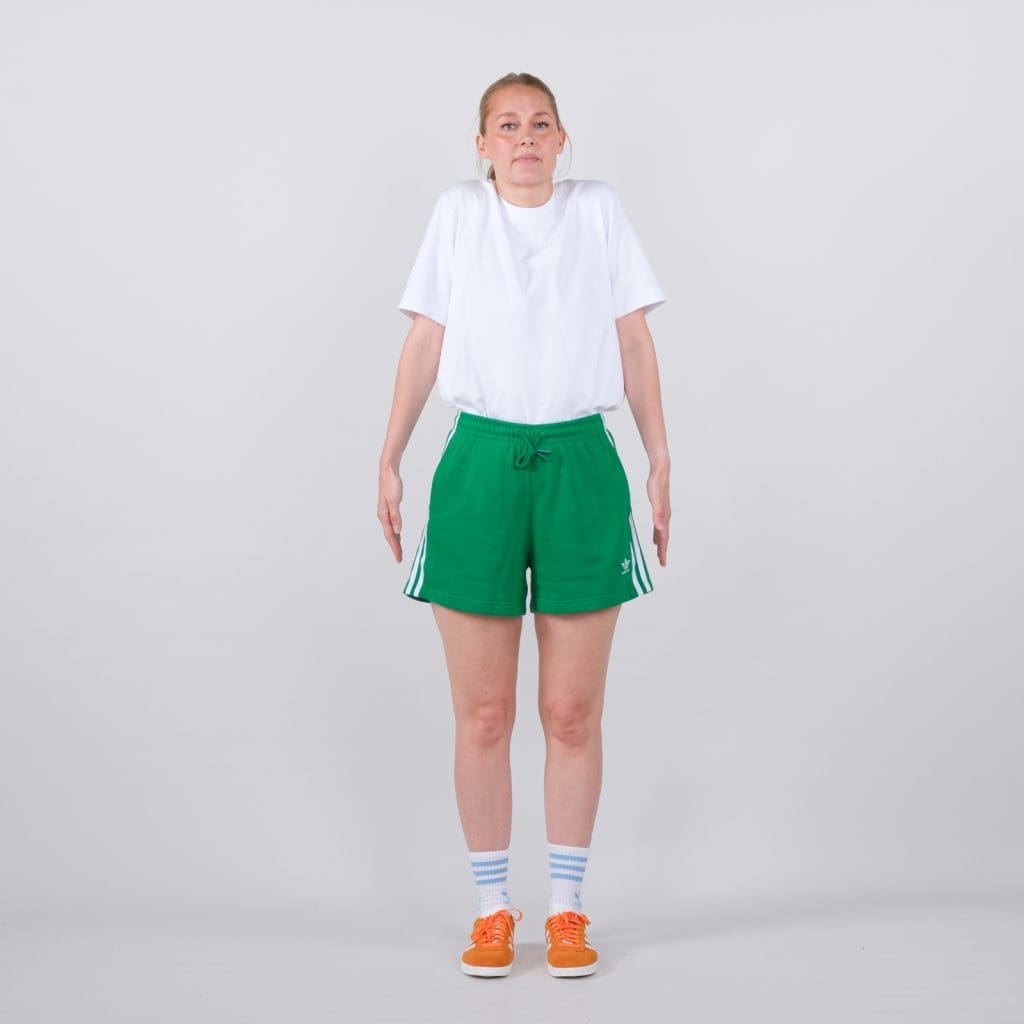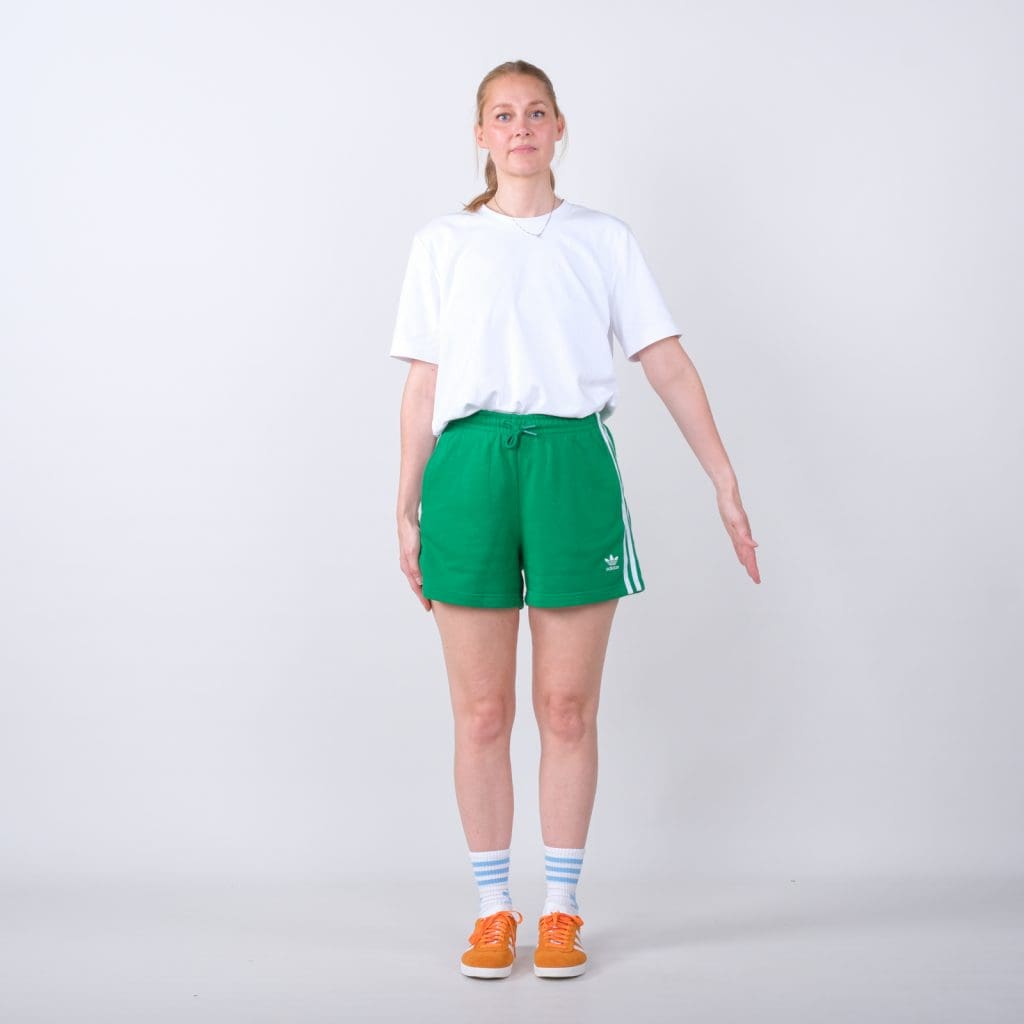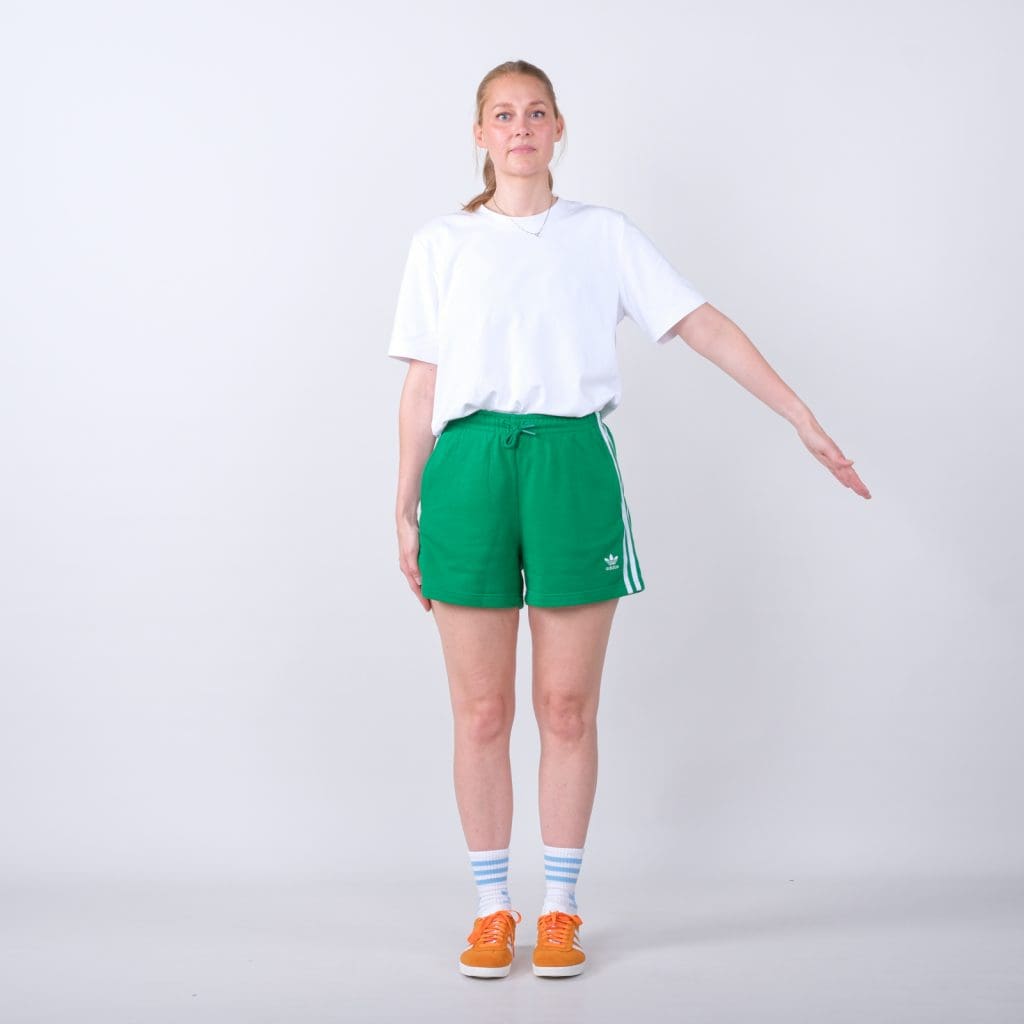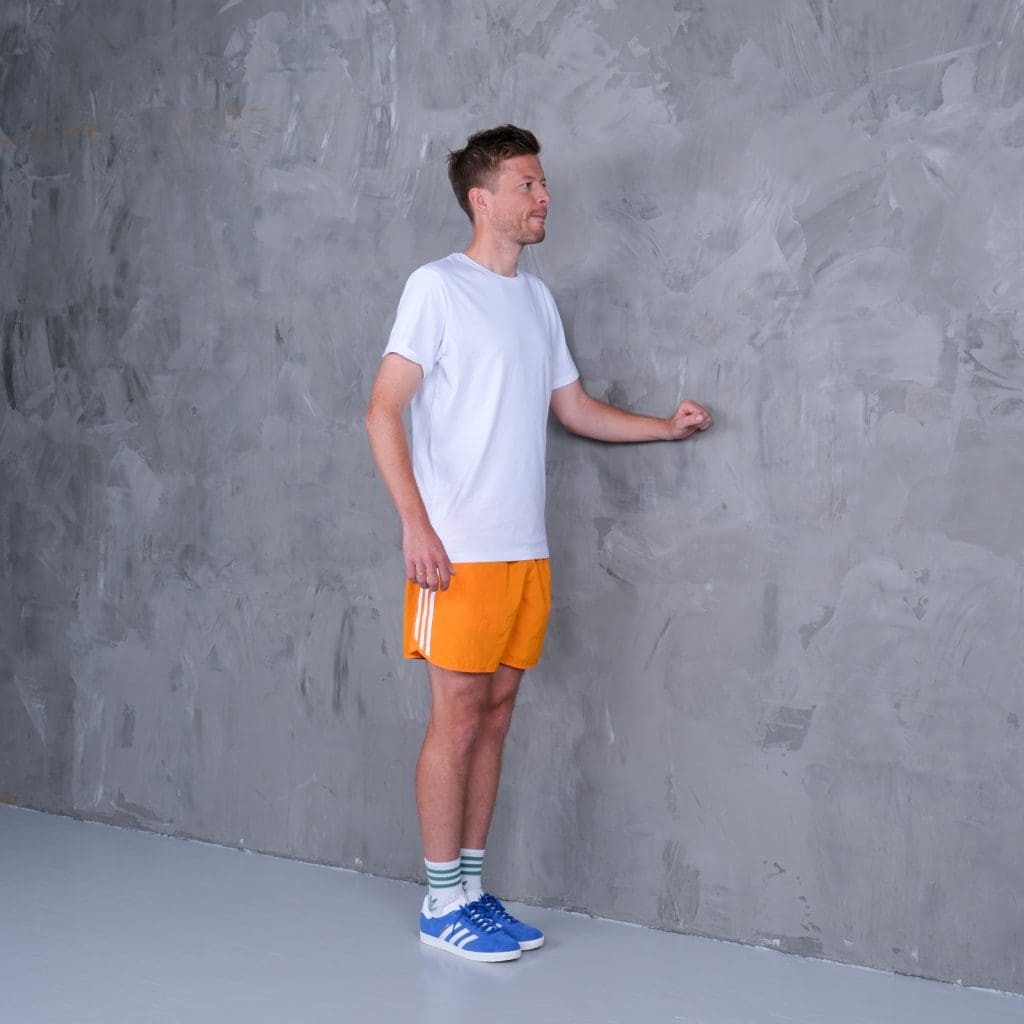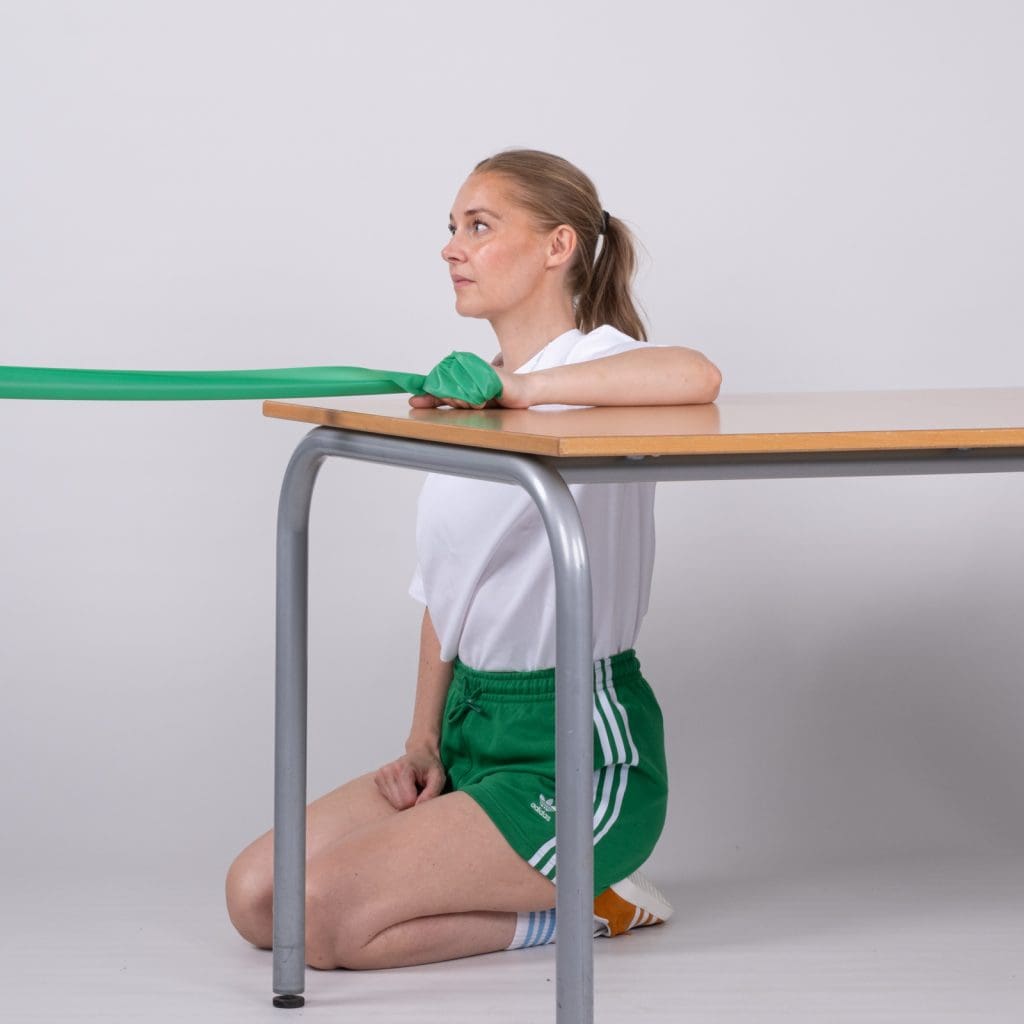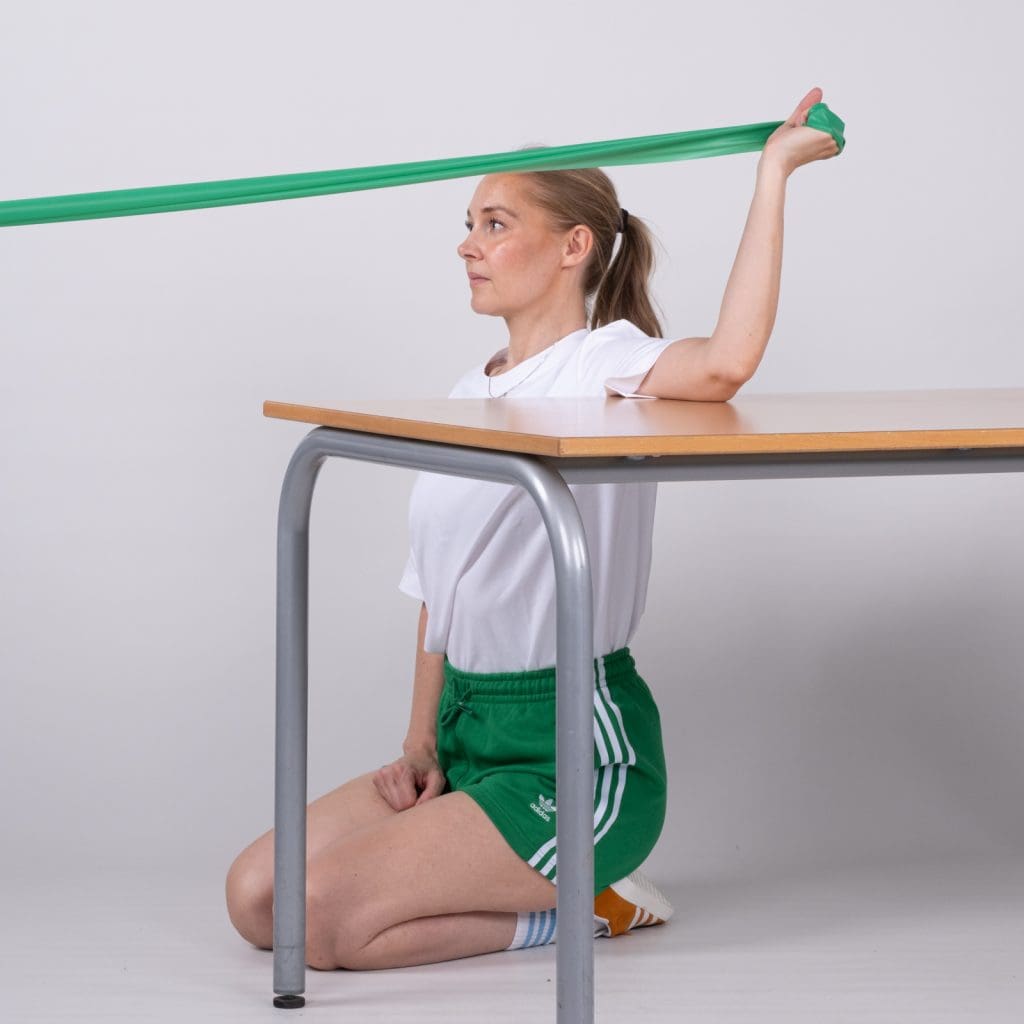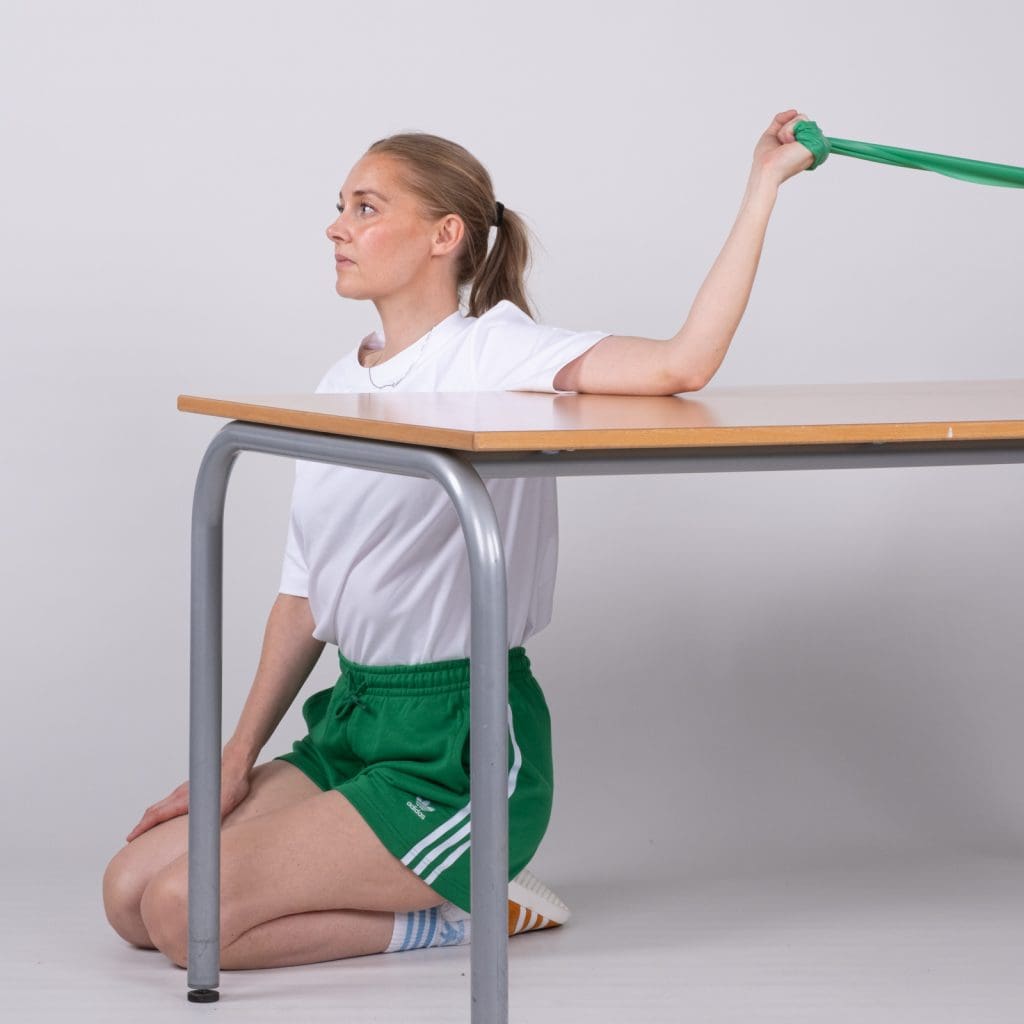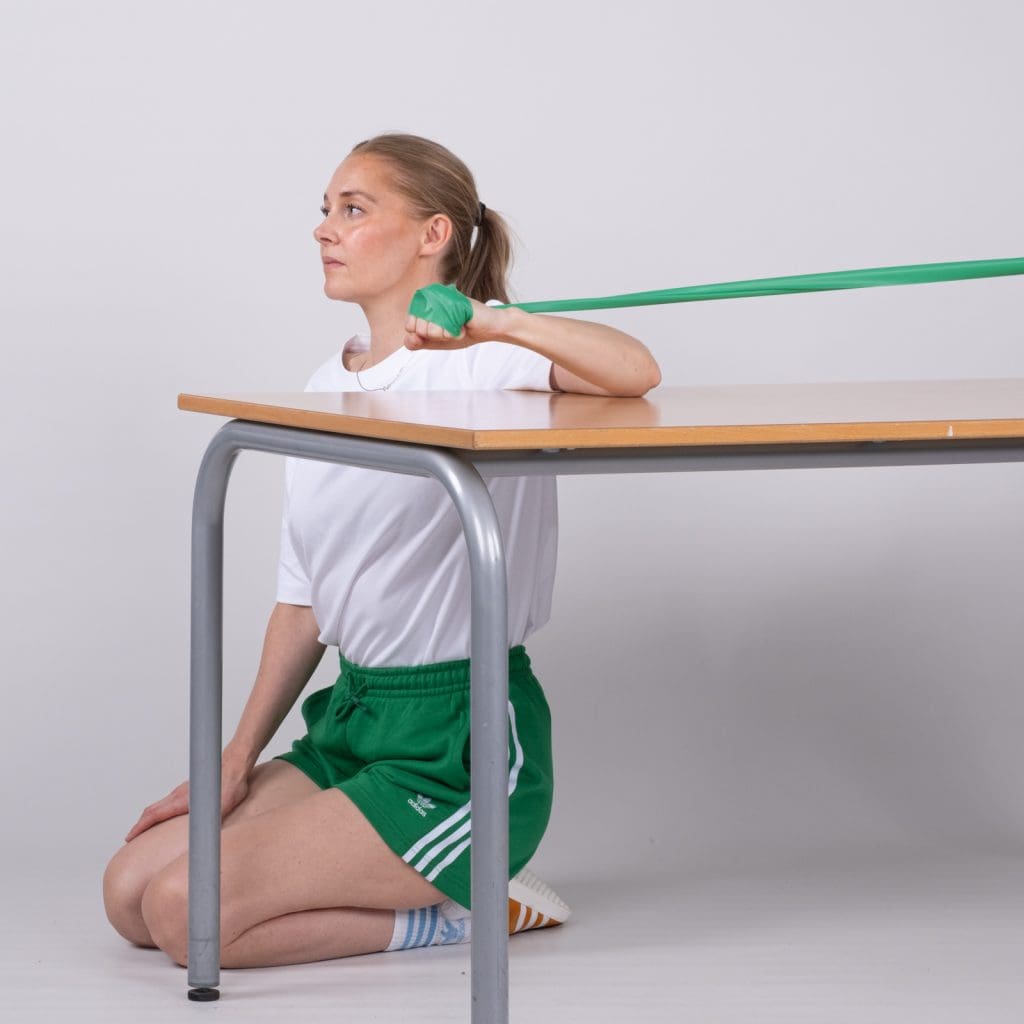Condition
Unlimited: Cycling. Running.
Stretching
10 minutes of each training session
Sit on a chair. Place your left hand on the right side of your head while your right hand holds onto the chair seat. Pull your head slowly to the left and hold back with your right arm so that the right side of your neck is increasingly stretched. Pull your head in different directions (forwards/backwards) so that all the muscles around your neck are stretched. Hold the stretch each time for 20 seconds. Repeat the exercise on the opposite side.
Stand in a door frame or similar. Bring your arm slightly backwards and hold your hand against the door frame. Press your arms against the frame so that there is an increasing stretch on the front of your shoulders. Hold the stretch for 20 seconds and then move your arm up and down the door frame and repeat the stretch so that different parts of the muscles are stretched.
Stand with your training arm in front of your body. With your opposite hand, press behind your elbow on the training arm so that your elbow is pressed against the opposite shoulder, causing an increasing stretch on the outside of your shoulder and upper arm. Hold the stretch for 20 seconds. Repeat the exercise on the opposite side.
Strength
50 minutes of each training session
Stand slightly bent over a chair/table. Support with your healthy arm. Let the training arm hang limply towards the floor. Lift your arm/shoulder straight up towards the ceiling by using your shoulder blade muscles. You can bend your arm when you lift your shoulder if you find it difficult to engage your shoulder blade muscles.
Stand with your training arm stretched down along your body. Slowly bring the arm out to 20 degrees. Hold the tension for a few seconds and lower the arm again. Then extend your arm to 40 degrees. Hold the tension for a few seconds and lower the arm again. Finally, extend the arm to 60 degrees. Hold the tension for a few seconds and lower the arm again.
Attach an exercise band at table height. Kneel at a table with your face towards the exercise band. Your shoulder is level with the table on which your upper arm is resting with your palm against the table top. Grasp the resistance band with your hand. Slowly move your forearm up and backwards to tighten the elastic band. Hold the tension for a few seconds and slowly lower your arm back down onto the table. The back of the hand faces the ceiling/backwards throughout the exercise.
Attach an exercise band at table height. Kneel at a table with your back against the exercise band. Your shoulder is level with the table on which the training upper arm is resting. Rotate your upper arm up and backwards. Grasp the resistance band with your hand. The back of the hand is facing backwards. Slowly move your upper arm forwards to tighten the band until your hand is on the table. Hold the tension for a few seconds and slowly bring the arm back to the starting position. The back of the hand faces the ceiling/backwards throughout the exercise.

